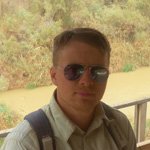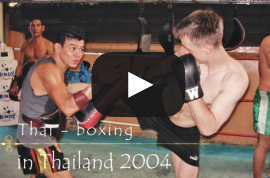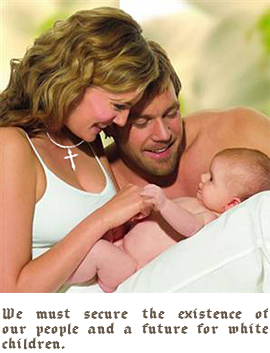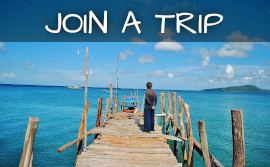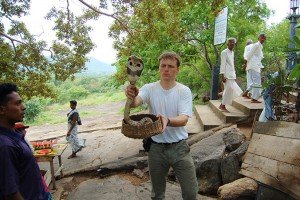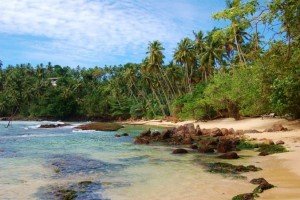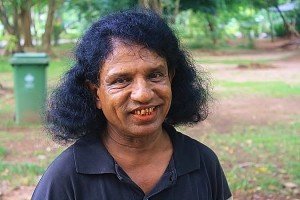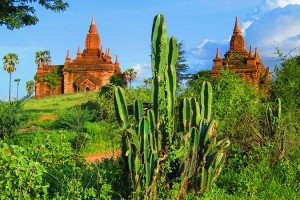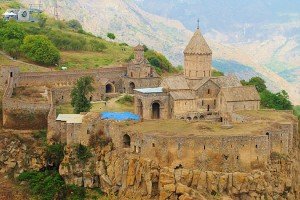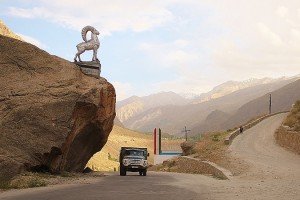Expedition to Nepal 2006
All travel reports are translated electronically although minor improvements are sometimes made.
Expedition to Nepal 2006
My trip: Thamari, Kathmandu-Durbar Temple, Patan-Plac Durbar, Monika and her red sari) – Chitwan-Bhaktapur National Park (Durbar Square) -Kalachakra Mandala-Landscape-Gorkha -Pokhara and expedition to Sarangot-Tansen-Lumbini (the birthplace of Buddha) -Bhairai.

With Nepalese children after coming from India. Nepal.
Nepal – from Kodari to Kathmandu
(Riding an antique bus on the edge of the Himalayas, beautiful views, Nepalese villages, broken bus.)
After a difficult but beautiful crossing through Tibet, I reached the Indian subcontinent. All the travelers I met praised Nepal very much and said that it is one of the most beautiful countries with the best food and the nicest people. After the visas were quickly and easily pasted into our passports, we were “lighter” by $ 30 per person. Now my plan was to rent a jeep to get to Kathmandu, where we were supposed to rest after a hard journey in Tibet. I haggled a bit but got a fairly good price for us and other travelers. Together we rented a jeep to take us to Kathmandu and we had beautiful views along the way. In addition to the beauty of the lower Himalayas (than before in Tibet), I saw people living in wooden huts in the mountains, waterfalls, and playing children and herds of goats. We were driving in a very good mood and it seemed to us that nothing bad could happen but due to the terrible condition of the roads we had an accident. In our jeep, the axle on which the wheels are mounted has broken, as well as the chassis.
The first time I saw a car just sat on the ground. We felt helpless but I had to somehow get there, especially since I was traveling with a woman and it was about to get dark. I knew that in about 6km there is a beautiful tourist resort called “The last resort”. This was just what I needed considering the name suited our situation very well. We could not sit in the Himalayan wilderness, so we went for help, leaving the people with whom we traveled with our luggage. The road was difficult and long and we had had enough of this walk and full awareness that it would be getting dark soon. In the end, it turned out that we spent the night there, although for Nepalese conditions it was very expensive. On the way back to our trash, we saw our friends who left our luggage with the driver, which was very risky. When I saw them walking without our bags, I ran to retrieve them and saw the driver taking them off the roof of the car and a few suspicious guys walking around.
On the way back to the center and after dark, the children shouted “give me the suitcases”. It was getting dangerous, it was dark and there was still a long way to go. Suddenly, out of the darkness appeared another junk sent by our friends, which took us to the place. We finally felt safe! “The last resort” is a beautiful tourist resort located high in the mountains, offering rope jumping down the cliff and plenty of other activities. It is very popular all over Nepal.

Old and young generation in Nepal. Children are full of energy. The old man has had enough.
To get to it, you had to go over a 100-meter-long bridge suspended on ropes, which was located at a height of about 200m above the precipice. From there, there was a beautiful view of the Himalayas, the river and everything around. It was in this center that the answers to our prayers were fulfilled. We had a great dinner, real chicken meat, salad and even dessert. We could eat to our heart’s content because there was a buffet and we ate enough. Also, after a week of muck and a big stench and cold, we bathed very thoroughly in the shower with hot water, which was a wonderful experience. The next morning we had an equally large and delicious breakfast and took a shower again, just in case. It was already warm outside, and we didn’t have to shiver from the cold. Despite our bad luck in the first moments in Nepal, everything was going well.
The next morning, fresh and full, we took a local bus to the town of Barbharese, 13 km away. We rode to Nepalese music, along the shores of a blue, rushing river and high in the mountains. We sat on sacks of rice in the aisle because in Nepal everything is transported by buses and there is a rule that everything is always there. That’s why people travel here on the rooftops and are clinging to the handrails outside on both sides of the bus. From Barbarhese, we took a bus to our destination. There was a lot of stuff on and off the bus again, and people on the roof that were jumping out of the walls and roof as the bus slowed down. Sometimes everyone helped to load big bags of goods, which is a kind of collective work, so I helped too. The bus was driving again on the edge of the precipice from where I could admire the wonderful landscape and each time the bus braked you could hear the screeching of the brakes. This stuff was useless anymore, so covering 80km in these conditions took us as much as 4 and a half hours. However, the views and the fact that I could sometimes jump out and buy fruit, compensated a little for the hardships of driving.
Nepalese company was also good. All along I remembered that there are several hundred serious bus accidents in Nepal each year. I even saw a few crashed buses on the road and one in the abyss, crushed against the rocks like a soda can. This is a serious problem here. After many hours of interesting but long and risky driving, we finally got to Kathmandu.

Transport in Nepal is a separate adventure. Buses leave when they are 120% full. You cannot count on timetable. It will arrive at some point.
Barbarhese
It is a small Nepalese hole that you have to come across on your way from Kodari (Tibet border) to Kathmandu. There are charming landscapes, i.e. mountains, a rushing stream and clean air. Besides, you can do a little shopping and use the toilet (read; pee on the wall). I’d advise sending a postcard from here. Certainly no one will have a clue where it is.
Kathmandu
To begin with, I will say that Kathmandu is the capital of Nepal and also the largest city in this country. It is in Kathmandu and its surroundings that the greatest cultural heritage of this Nepal is located in the form of numerous temples and Durbar Squares, which I will talk about later.
Thamel
After reaching Kathmandu, famous from many stories, we took a hotel room which was a luxury compared to others. We lived in a district with a lot of tourists, which is Thamel. There are tons of hotels here ranging from three to five dollars a night for two people, and that’s a good thing because I’m not too jerky. They are all clean, with their own bathroom and hot shower. There are also a lot of restaurants that are fabulously cheap. After my Tibetan trip here, I cannot say that we only eat meals. We have real feasts here. Sometimes like Romans – lying down (the same was in Vang Vieng in Laos).
It is wonderful in Kathmandu, people are well-oriented towards tourists, they speak English and are not intrusive. It is a country where it is always nice to get away from Europe – just like Laos or Thailand. It is also quite warm here, we feel well cared for and eat a lot of fruit. A very important advantage is that it is very cheap. It is cheap everywhere because I can eat a very large, delicious dinner in a restaurant for one pound. Kathmandu, apart from its delicious cuisine, is also famous for its great art. There are many painters and craftsmen who make decorative canvases and carpets, sculptures and jewelry. Monika ordered a custom-made sari, a traditional Nepalese and Indian dress, and of course I buy a lot of souvenirs and collect T-shirts. Now our apartment will look like a museum with souvenirs from all over the world.
The whole of Thamel is a great tourist ghetto with many souvenir shops and restaurants. It is also the best place in all of Kathmandu to buy a flight and organize trips through professional offices, but I always organize everything myself.

At the bazaar in Kathmandu. Nepal.
Kathmandu – Swayambhunath (the monkey temple)
The first object that we went to visit in a new country for us was Swayambhunath or the temple of monkeys so commonly known because of the colonies of these animals living there. This temple is the most famous Buddhist building in all of Nepal. It is visited not only by tourists but primarily by native Tibetans – both those living in northern Nepal and refugees from Tibet. The first records about this temple come from the thirteenth century, but it is presumed that it is about 2000 years old. I will never forget when we drove up to Swayambhunath in our little car. On all sides we were surrounded by dirty streets, there was a bazaar next to me and in front of me there was a colorful gate with stairs and Buddha statues in the distance. Already from the street came the screech of monkeys jumping on trees and asking for food. Before entering, I bought bananas to make it more pleasant to visit.
This sacred place is built on a hill and surrounded by jungle only in the city. There are many great Buddha statues and a temple that is unique to Nepal. It has the shape of a mushroom from which grows a thick tower with painted “Buddha’s eyes” and prayer flags spread from the top of the tower. Climbing the high stairs, meeting the souvenir stands and feeding the monkeys, we reached the very top. There we had to buy a “white man” ticket because in Nepal foreigners pay up to 20 times more for admission than Nepalese. At the top of the mountain there were temples with characteristic four-sloped roofs from which there was a beautiful view of Kathmandu. The entire surroundings moved in time to around the 17th century. We were surrounded by beautiful temples, statues of buddha and other saints and people practiced their rituals by candlelight. There were also many shops where you could buy beautiful souvenirs and, among others, Tibetan music and T-shirts “free Tibet”.
All this, however, would not be so cute if it were not for the ubiquitous monkeys. They jumped in trees and screamed and walked around temples and great sculptures. Usually they did not approach people because they had no interest in it, but when I was holding a banana in my hand, they sprouted like out of the ground. They jumped at bananas, sat next to me and often even ate on me this way. When I teased them and didn’t want to give them, then they poked me with their hands because they were so impatient. I took a lot of photos with them and the most interesting was when I sat down with the largest male on the stairs thoughtfully (the effect was quite comical). An additional advantage of the temple of monkeys were eagles, which were also very numerous and which either sat in whole flocks on trees or hovered in the air like kites. The monkey temple was fascinating. It is a beautiful property that must be on the list of everyone who visits Kathmandu.

At Durbar Square in Kathmandu, Nepal. At the sight of a white traveller, children want to pose for photos themselves and they have a lot of questions.
Kathmandu zoo
The next day we drove to the local zoo. It is my tradition that I always visit them in every new country. It was nice and interesting, although I think that the most interesting species of animals was ourselves because everyone was looking at us. Besides, before entering, we had to pay the “tourist price” again. The thing that distinguished this zoo from other gardens was the possibility of riding an elephant, the presence of ganges and a unicorn rhinoceros.
Apparently, this zoo has as many as 800 species of animals, including many beautiful birds and reptiles. I think it is also the only chance for me to see the species that live in the Himalayas and in Teraju. I also saw the national bird of Nepal, the Himalayan pheasant called danphe, which also appears on one of the banknotes. As a consolation, I will say that those who will never go to Kathmandu and see this bird can go to the Warsaw Zoo. It is for sure – I checked it out.
Overall, we had a very nice time here.
Kathmandu – further experiences and observations
(Maoists – communist revolution in Nepal, poverty in Nepal, working children, education, arranged marriages.)
In Kathmandu I also applied for an Indian visa which is quite a long process. First I had to stand in a long line for them to give me one form and then come in four days to get a second form and a passport so that they could paste the visa. Four days were needed for them to check me on the police in Poland and England. However, I must admit that the Indian government is very nice to Poles. As the only nation, we did not have to pay for a visa and we get what we want. Americans and Russians pay double as usual! Me and Monika took multiple entry visas for a six-month period because we intend to visit all countries bordering India. I think that my adventure will take on completely new blushes here. As for Kathmandu, we live in the best district, but after leaving it you can see that it is a very poor country.
Roads and local transport are in terrible condition, and quite often on the streets you can see walking cows and goats that are already part of the traffic. Also, when it comes to the transport I described earlier, people use local buses to transport goats, ducks and all livestock. It is definitely a very unusual sight for me which makes the stay here so exotic. In addition, people try to talk to me in a very nice way and we always bargain about everything, which results in many funny situations. From what I have seen, there is no such poverty as in Tibet, but it is very poor. You can see it in what conditions people live in and how they are dressed. Children work by selling fruit and souvenirs (which is also the same in Southeast Asia). Girls are often not sent to schools because they get married even at the age of 16, and also for whoever their father tells them. Families are mostly supported by men and education here is also very poor as there are up to 80 people in the class.

With a goat and monks at the Swayambhunath Temple, also known as the “Monkey Temple”. There is indeed a large colony of monkeys there, around 4500. Kathmandu, Nepal.
Teachers often write on the blackboard regardless of whether the children understand it or not. It is because of poverty and selfish and greedy people in power that Nepal is still one of the poorest countries in the world. I have described a political group called Maoists here. I think these communists are everywhere. I see their posters inciting violence, they often scream in the streets, they wear communist flags (red with a hammer and sickle – like in Laos), have red painted faces and shout their slogans loudly. After ten years of bloody battles between the government and the Maoists, they finally have their place in the government. It seems that by a government that does nothing, people get poisoned even more by stupid mobs.
Maoists are ruled by one man who dictates them as he pleases. I wonder if people understand why they walk with their faces painted on and why they yell. Perhaps they are doing it because someone told them so and they feel stronger in the group. Tourists are not in danger, but in my opinion this country is going in the wrong direction. The situation is very precarious here. The Maoists got their place in government yesterday, and otherwise, a civil war would very likely have broken out. I know that in other parts of the country one woman was stoned to death by the crowd and due to the tense political situation some parts of Nepal were closed to tourists.
From how Nepal works, I learned that there are no taxes, no public benefits, everyone lives for themselves and the government also for itself. For me, however, it is still a very attractive country because apart from the natural and cultural beauty, people treat me very well and it is very cheap. Monthly salaries in this country reach a real bottom because it is a sum of 10 USD, although the average rate reaches 20 USD and more. Kathmandu and tourist resorts earn the most and people work all day late, seven days a week. I believe that I am very lucky to have a Polish passport and to be white. It is a great gift from fate and anyone who cannot take advantage of it is lazy or stupid. While traveling in developing countries, I can see the poverty and the conditions in which people live. It is unimaginable for Europeans. You have to come here and see it.
In Nepal I also get to know very new customs. Well, everyone who talks to us always talks only to me and never to Monika. All matters are taken care of with me and they treat her as if she was not there at all, unless she is walking alone. There are good sides to this because Monika has an easier life thanks to it. I also noticed that I had never seen men and women holding each other’s hand before, but two men walking together very often. This does not mean that they have inclinations towards each other, but only that they are friends or family members. It takes some time to get it right, but that’s the custom here. As I mentioned earlier, the main religion in Nepal is Hinduism where the god is Lord Shiva, Vishnu or the elephant man (Ganesha) and many people have red circles painted on their foreheads. One of the religious posters showed a man with purple skin (Lord Shiva) with a cobra wrapped around his neck. He was sitting with a woman holding an elephant-headed baby in her arms.

Meditation in the company of the Buddha. Kathmandu, Nepal.
What I like about this religion is that snakes are presented here as sacred and friendly animals, which unfortunately is not found in the Catholic religion. Anyway, for me, Hinduism is a kind of beautiful, colorful fairy tale for children where all characters are extremely original and interesting. Walking around Kathmandu, I always bargain with fruit sellers, sometimes someone wants to sell me souvenirs, I often see sliced pig heads and goats on hooks, all in the great smog of the city. The whole environment has its own charm and the atmosphere of this place is extraordinary.
If I am fed up with dirt and chaos, then I can always return to a hotel in the Thamel district where it is clean, there is delicious food from all over the world and a part of this city comes alive at night. I am also aware of the “tourist price” but I am not going to fight it and if I give these poor people a few rupees more, nothing will happen to me. I move here most often either on foot or by a small taxi, which gives me a good opportunity to see the city.
Kathmandu – Durbar Square
While in Kathmandu, near the temple of monkeys and the Bishnumati River, I saw without a doubt the most important building in the city – Durbar Square. It is a kind of old town with an old market, a wealth of temples and the old Hanuman Doka royal palace bearing the name of Hanuman or monkey god. Among the many interesting buildings, there is also the temple of the god Shiva and Ganesha (the elephant god), as well as erotic sculptures and the column of King Pratap Malla. All these objects and many more are extremely interesting and you can spend a few hours here watching, entering temples and observing the surroundings.
Durbar squares were created in the fourteenth century, although they flourished until the twentieth century and they are the most important cultural heritage of Nepal and are also on the UNESCO list. They are located in all three ancient cities of the Kathmandu valley, also Patan and Bhaktapur. The one in Kathmandu, however, is the largest by volume. In Durbar Square there are many buildings with splendor of sculptures, most often many faces of women with twenty hands and with elephants. In one temple, in order to reach the top, you have to climb the stairs with huge statues of elephants on the sides. Many temples are also square mushroom shaped temples, one grows on top of the other, and most often have four floors of imposing roofs. This is the easiest way for me to describe these buildings. It used to be inhabited by kings and today it is a cultural center and a great tourist attraction
There are fruit vendors, souvenir shops and, of course, begging children in the markets. Tourists have to pay admission and Nepalese don’t, which I got used to. Undoubtedly, Durbar Square was the kind of town within a city that was very distinguished by its beautiful old architecture from the rest of the run down and dirty Kathmandu. For me, however, it is very interesting wherever I go.

I choose a knife in Kathmandu. Nepal.
Patan – Durbar Square
Kathmandu and Patan are very close to each other and they are both actually part of the same city, with the only difference that they are in different districts. Until 1768, Kathmandu and Patan formed separate, independent kingdoms. Here is also the beautiful Durbar Square with a wealth of temples, sculptures and buildings characteristic for Nepal with four sloping roofs. Most of the local monuments were built in the 17th century and were built by King Malla, and the Durbar Square in Patan is also on the Unesco list and together with the Mangal bazaar form one whole. All the beautiful buildings here, of course, were built in the same style as on Durbar Square in Kathmandu, and the ones that are worth mentioning in the first place are: the Royal Palace, the Taleju temple and the Krishna temple. There are many impressive sculptures here, and the Bhimsen temple with a lion on the top and the column of King Yoga-Narendra Malla from the 18th century with his figure deserves attention. On the top of it, however, sits a bird and, as the legend says, one day it will fly away.
In Patan I really liked the Sadhuhs or “holy people” who were rather funny to me and always wanted money for photos with themselves. They wore yellow or orange dresses, and had not shaved or cut their hair in even 20 years. Their faces were painted red and their bodies white, although their ingenuity was quite large. They were definitely the biggest attraction in Durbar Square in Patan, especially after seeing a similar place in Kathmandu. We both had a great time here because in the company of “holy people” you can not be sad and by the way it is another good way to get to know the culture of this beautiful country. It is a pity that we had to pay the price of the “white man” again for entering this facility.
I will also mention that Patan is a great place to do shopping, because right next to Durbar Square is Mangal bazaar with many shops specializing in traditional Nepalese art. I believe that this is one of the best places to buy bronze statues of Hindu gods, interesting canvases and wood carvings. Of course, this type of shopping can be done in any tourist facility, but here you can bargain the best price, which in Thamel (where we stayed) would be difficult. With Patan, we walked through the city streets to observe the surroundings without any specific purpose, which was also a nice experience. Along the way, we saw dirty bazaars, a loud crowd, a cricket ground, and a royal palace.

With a Nepalese man dressed in traditional costume. I really enjoyed this experience. Kathmandu; Nepal.
Monika and her red sari
As I mentioned earlier, Monika ordered a red sari, made to measure, and she bought (more) shoes to match the sari. When we went to Durbar Square in Patan and then to the Old Town in Kathmandu, Monika dressed up in her new outfit. Of course, the Old Town and Patan were beautiful and every moment spent there was a new experience, although I think that the real hit of the day was Monika herself, dressed in her beautiful, red saris. Let me remind you that the sari is a traditional Nepalese and Indian dress with many decorations that can be sewn from many colorful materials – including silk. It consists of three main parts, i.e. trousers, a T-shirt and a long, over two-meter-long cloth, which is put on in a special way so that a woman is covered and at the same time emphasizes her beauty. They are worn only by Nepali and Indian women, so when Monika showed up in public, she aroused great admiration in every place we were.
Everyone looked after her and said she was beautiful. No wonder – they saw a pretty, white woman with blonde hair in a traditional dress for their culture. The Nepalese people were very happy and Monika was very happy. We also walked the streets where people were selling vegetables and where nothing unusual was happening, but that in itself had such a beautiful mood that we wanted to be there as long as possible. We were in some interesting Hindu temples where we took many interesting photos with Nepalese children, with the most interesting sculptures, people and burning candles in the background. We visited many magical nooks and it was a great day during which Monika had an ovation wherever she went. In the evening I took a taxi and we drove to a restaurant on Thamel for another delicious dinner.
I would like to add that although I definitely did not raise any applause, I also took part in Monika’s red sari. First, I sponsored half of its value and then took pictures all the time. I also helped to put them on Monika and at the end I helped her undress because the t-shirt had a zipper quite high.

In the vicinity of Durbar Square in Kathmandu. Nepal.
The Royal Chitwan National Park
After a few eventful days in the Kathmandu valley, I wanted to go outside the urban area and that’s why I chose one of the best national parks in Nepal and at the same time in the whole of Asia. Royal Chitwan National Park is a must-see when traveling in Nepal, especially as it is only a few hours away from Kathmandu. A visit here also gives you a chance to see a unicorn rhino in natural conditions, although Asian animals are so shy that the chances of seeing a rhino, tiger, leopard, gavial or black bear are less than 1%. They used to be hunted, but today they are under protection and Chitwan Park, apart from Kathmandu and Pokhara (which I will describe later), is the biggest attraction in Nepal.
From the bus station in Kathmandu we took a very old and slightly delayed bus and then, driving through the beautiful Himalayas, we admired the nature. As is always the case in Nepal, the road was hard and we were a bit shaken. We also saw a couple of wrecked buses on the way, but our driver didn’t slow down anyway. After five hours of risky driving on a narrow road over the precipice, admiring the mountains above us and the river that we hoped not to fall into, we reached the town of Tadi Bazar, from where we were taken to Chitwan Park.
We lived here in a wonderful mansion where the road to the main gate was surrounded by palm trees and there was a lot of vegetation around. There was a river nearby where the children were bathing and the women were doing laundry. There were fields around, which were plowed by farmers with a simple plow using a mule. The place where we lived was a beautiful villa, but people living outside our area lived in simple, thatched wooden huts. It was a great opportunity to see rural life in Nepal. After that, I often walked around to spend time with ordinary people. In the residence where we stayed, we had a nice room to ourselves and they fed us also wonderfully.
However, the staff did not live in the hotel, even though the rooms were empty. They lived in a dingy hut outside and slept on bunks that looked like slaves’ quarters. It was the same in other countries that I had visited before. For example in Cambodia, when I was going to sleep at the hotel, people would lie down on the beach chairs in the street if they had one!

A traveler from Poland with an elephant. Chitwan National Park. Nepal.
The next day we were driven to the wild animals area. I had already been on an elephant safari in Thailand, but for Monika it was the first time and therefore she was very excited. Before the safari, we were able to hug them, stroke them and ride them, which was very nice. I also bought some banana branches from local children and we fed all the elephants together and then gave them to them while we were driving. We got on the elephants and went deep into the jungle to observe nature. Our elephant walked for a few hours but we did not manage to see any animal. The most interesting moment of this trip was the moment when our elephant was crossing the river and of course, while sitting on its back, we had water a few centimeters below us. At the same moment a crocodile swam past us, but you had to be really vigilant to see it.
We spent the rest of the day feeding the elephants, accompanied by local people. Sometimes we also entered their thatched houses where we could see how they live, run a farm and milk the goats. In the evening we went to a very funny performance at a local theater where a local ethnic group called Tharus combined dance with martial arts in a very interesting way. I think that the hallmark of the event was the dance during which the boys were spinning around and hitting strongly with their sticks in many ways. After that, we just sat by the river, watching the beautiful landscape and drinking coconut milk. The next day, we got into the canoe and sailed to the wild forest with the hope of seeing a unicorn rhino. We walked in silence, at will, following the guide so as not to scare the animals away. The walk was interesting because we often had to wade through unpaved paths and on the way we managed to see a few wild animals but not those we were hoping for.
In an adventure movie it looks very simple, but in fact animals camouflage very well and it is not easy to meet them. We saw some monkeys quietly hiding in the treetops and some traces of large animals. It was a tree scratched by a bear, but not a bear itself. However, I must admit that when I was sailing in a canoe (a kind of boat made of one piece of a tree) it was an adventure because I saw crocodiles in their natural habitat swimming nearby or basking in the sun. Once we even swam quietly to one gharial, but he didn’t let us get too close. The plant was also interesting, as it immediately folded its leaves when touched. On the way back to our house, we also witnessed people cutting high grass and reeds with flails.

A monkey on a tree in the Chitwan National Park in Nepal.
Probably for the production of household items. The whole trip was very interesting, although I have seen a unicorn rhino so far only in the zoo. I think that I will definitely see a lot more in the national parks in India. The sad experience of the day was my conversation with the guides who said they only earn $ 10 a month and have no prospects. One of them had stitched shoes because he couldn’t afford new ones. On my last day, we got up at six in the morning to watch the birds and we were able to see some interesting species, including predatory species. Chitwan Park will always be associated with contact with nature in this beautiful country.
On the way back to Kathmandu we had a delay because the Maoists made a manifestation blocking the main road. While standing at the bus stop, we were again a great attraction for all people around because we were the only white people in the area. However, when we got on the bus full of people and livestock, we rushed to the brim. Being high in the mountains, the driver avoided a bend and drove so that we jumped under the roof many times. Certainly, those people who rode on the roof were also jumping up, which is a tradition in Nepal. It was a local bus so we had a duck running around the deck and some very “photogenic” faces with missing teeth and long unshaven beards. Driving was very dangerous – especially since we were driving after dark. I think that the driver had his and our happiness in one of his gods and even a few crashed buses on the way did not suggest him to slow down. After five hours, however, we happily reached Kathmandu.
Bhaktapur – Durbar Square
After visiting Chitwan Park, we stayed in the same hotel as before and I could easily plan the rest of the trip around Nepal. Then I had time to buy souvenirs, get an Indian visa and go to the hairdresser. After returning to Kathmandu, I dedicated one more day to this amazing city. I went to Durbar Square where I was able to see magnificent buildings from several centuries back and the atmosphere characteristic for this place. However, I decided to visit less than an hour from Kathmandu but lying in the same valley – the famous and beautiful Bhaktapur.

People at the bazaar in Kathmandu. Nepal.
Bhaktapur was founded in the 9th century and was the capital of the entire Kathmandu valley between the 14th and 16th centuries, although most of the beautiful objects and sculptures were made at the end of the 17th century. Then Bhaktapur lost its importance after losing its sovereignty and creating the state of Nepal, the capital of which was Kathmandu. All of Bhaktapur was created by the Malla dynasty and has survived to this day. For example, Place Durbar in Kathmandu and Patan have been modernized while Durbar Square in Bhaktapur has remained intact, as has the lifestyle. Apart from the only difference, now it is a great tourist center, a good place to trade, and there are some good restaurants and hotels overlooking Durbar Square. Bhaktapur is also mainly inhabited by the Hindu community, while in Patan and Kathmandu there are large Buddhist communities. As a curiosity, I would like to add that Bhaktapur is not only on the UNESCO list, but has also been appreciated by Hollywood because pictures for “Little Buddha” by Bernard Bertolucci were shot here.
It took us about an hour to get here from Thamel in Kathmandu, taking into account the traffic jams and the terrible condition of the roads. Before entering, I had a conversation with young Nepalese people who told me about the hopelessness of living in their country and the lack of prospects, and that Nepal is only beautiful for rich people like me.
Then I had to pay an admission ticket, which turned out to be very unpleasant because everyone paid 50 rupees and I, as a white man and allegedly rich, had to pay as much as 750 rupees. Of course, it’s only a few pounds, but I didn’t like it anyway. Durbar Square itself was beautiful and really struck with the richness of its architecture and art. At the unfortunate cash registers there was a column of King Malla, and then in the main courtyard there were several palaces and temples with square, four-sloped roofs characteristic for this country. Among the many beautiful buildings, the most noteworthy is the Nyatapola temple from the 18th century, which is also the highest (30m) and is the best example of architectural and sculptural art of the Malla dynasty. It has traditional, previously described roofs and at the entrance there are, among others, two stone wrestlers, two lions and two elephants. I spent most of my time here looking at the monuments and taking pictures, although I also enjoyed contact with people. When I was buying fruit, laughing children ran up to me, and then a seller of old knives. It was a nice experience both times.
There are also many painting studios in Bhaktapur, and of course I didn’t have to wait too long to be invited to one of them. The salespeople sat me down on a comfortable couch, they were nice and wanted to push me some interesting but very expensive pictures. However, I never make such decisions hastily and as it turned out later, I bought a lot cheaper in Patan the next day. I dealt with people who were very well trained in trading, were very nice and based on basic human emotions such as pity. However, I was not fooled and bought what I wanted elsewhere for maybe five times cheaper. In such countries you have to be very strong mentally and you have to be able to say “no”. I often meet people who ask for something and try to convince me to donate some kind to a school or an orphanage. I have never met such nice and so clever people as here, but each time I refuse because I am simply not naive.

In front of the main dome with prayer flags. Monkey Temple, Kathmandu, Nepal.
After dark, we left this beautiful place and this time the trip to Thamel took us an hour and a half as the traffic jam was even worse. and our little Nepalese taxi broke down for a while. To sum up, however, a visit to Bhaktapur is definitely one of the must-see tourist destinations in the Kathmandu Valley.
Two famous paintings in Nepal
Landscape
Among the many souvenirs, I will describe one more that has a cultural value. It is an image commonly known as a landscape. There are many sizes and depending on the price, the landscape is more or less, but each of them always contains the same details. The landscape symbolizes the mental and cultural closeness to Tibet and at first glance it looks like a drawing made by a small child, but it has a deeper meaning. At the top, there is always Tibet shown, i.e. the Potala Palace and the Jokhang Temple, symbolizing the culture, art and philosophy of Tibet in the holy city of Lhasa.
Below are the Himalayas and Mont Everest and Nepal is painted under the Himalayas. Here we see the Monkey Temple and Place Durbar in Kathmandu, Patan and Bhaktapur with their characteristic Malla roofs. Below is the river and Chitwan National Park where there are always some elephants and lions painted. On the west side of Kathmandu you can see the city of Pokhara with its Annapurna Himalayan range and at the bottom of the picture is Lumbini, the birthplace of the Buddha. This picture is a nice souvenir, especially for those travelers who have been to Tibet and Nepal.
Kalachakra Mandala
One day, while in the area of Durbar Square in Patan, I bought a painting that I had wanted to have for a long time, but I could never bargain a good price. This image is a “kalachakra mandala” designed by the Dalai Lama for world peace and is one of the main doctrines of Tibetan philosophy. It is a very complicated, intricate work, the details of which can often be seen only under a magnifying glass. The image itself has the character of a circle imitating the wheel of life and many symbols inside, which make up the whole, i.e. the path of man to perfection, the stages in his life and values in people’s lives and the elements that prevail on earth.
The mandala also reflects the cosmos, the entire universe and the beings living in it as a single whole. The mandala can also be understood in a different way. It shows the suffering of others as our own and that we will be able to understand it when we take part of it. This is what the young prince Siddhartha (the future Buddha) learned when he escaped from his palace. According to the philosophy of Tibet, kalachakra gives us a chance to learn the highest truth, which we are not able to grasp with our reason but through meditation, science, yoga, prayer or mantra. We can then better understand ourselves, the cosmos that surrounds us and the human beings who are part of it.
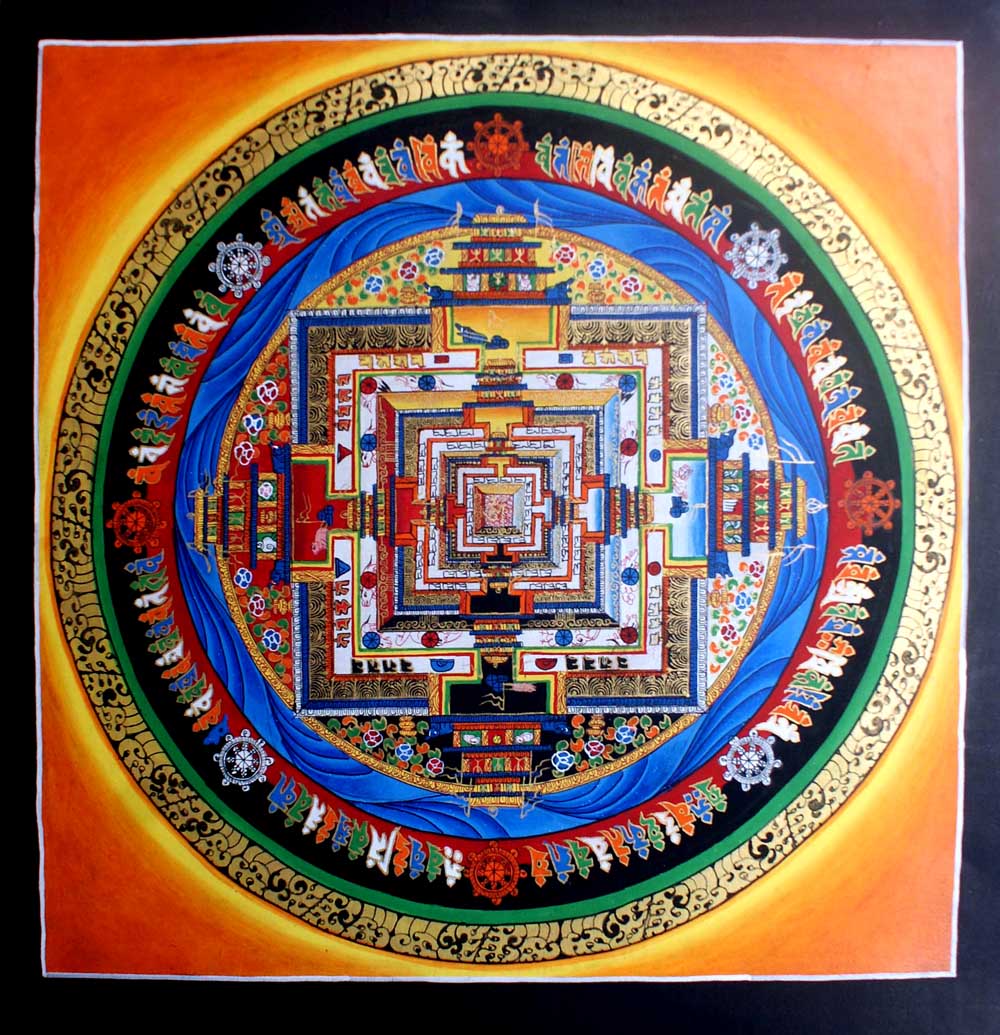
Kalachakra Mandala designed by the Dalai Lama for world peace.
This is how in a few simple words I would describe the basic meaning of this image, but to understand it fully, one should deeply become interested in the philosophy of Tibet. Just by looking at it it is impossible to understand its meaning. Many parts of the picture are covered with 24 carat gold which gives a nice effect, especially when viewed at an angle.
Gorkha
The next day I left for the town of Gorkha five hours west. Before the ride, a Hindu priest blessed our bus and said his prayers aloud and had a special paint in which he dipped his dirty index finger and put dots on the foreheads of all travelers. He touched the bus, the steering wheel and the driver. He gave me and Monika a flower dipped in holy paint and then bowed. Really, I experience something new here every time. Nepal is a great experience! Unfortunately, the station’s toilet was a big nightmare here. I thought that after the toilets in China, all the rest would be better, but apart from those in Nepal. The stench was indescribable but that was not the highlight of the program. For the first time in my travel career, I saw a toilet bowl where the level of the shit was on a par with the toilet seat, creating a perfectly flat surface.
As usual, we left Kathmandu late as it took some time to load the entire inventory and goods. Then we slowly left Kathmandu. Driving again was very difficult and time-consuming, although the driver was calmer this time. Finally, after many hours of uncomfortable driving, we got to Gorkha, but unfortunately it was not without an accident. Gorkha is located on the mountain and the driver had to accelerate in order to get our stuff going. However, there was another trash coming from the opposite direction and neither our nor that driver wanted to give way. As a result, they both braked at the last moment and the people sitting on the roofs fell down and one boy smashed his head. Anyway, we safely got to Gorkha where we took a very nice and cheap room with a shower and from the terrace we had a beautiful view of the mountainous surroundings. The town itself was run down and of little interest. There were shops on both sides of the only street and on the top of the hill there was a bus station and a market where it was worth trying sweet mandarins.
The next day I planned a few hours’ climb up very high stairs where there was a palace known as Gorkha Durbar. The climb was interesting but a bit tiring. We stopped several times, chatting with people who met us along the way, and observed their rural life in the higher parts of the mountains. The higher we were, the more beautiful the view was and the better it was visible how well people are coping in these difficult conditions. There were living quarters, a place for washing and cooking, goats ran slowly and gnawed the grass, and there was a tangerine field just before reaching the top. After a nice but quite tiring climb, we got to the palace at the very top of the mountain. Before entering, we had to take off our shoes and then we could admire two well-preserved temples – Kali and Gorakhnath. Unfortunately, only the followers of Hinduism could enter the latter. However, it was not a problem because the palace and temples were not the most interesting and that is not why we entered here. Best of all was the walk up the mountain and contact with people, and then a beautiful view of the snow-capped peaks of the Himalayas.
Even after my trip through Tibet and after seeing Mont Everest, this view was extraordinary. I was standing in the area of several hundred castle, in front of me there were palm trees and a deep, great valley and in the distance the snow-capped Himalayas. I felt very good, I spent some time there just watching the mountains and taking pictures and then we went downstairs. As usual, it was fun because we always had company and at the bottom I bought some mandarins. That evening, tired but after a good Nepalese dinner, we quickly went to sleep. After spending one day in Gorkha, the next day at 6 am we took a bus to the largest city in Nepal after Kathmandu, Pokhara. I would like to emphasize here that as soon as we left Gorkh, our driver was driving so fast that two people fell off the roof of the car in front of us again. Driving here is very dangerous, but we have no choice. We have to move somehow to complete my trip.

Waiting for a bus. Nepal.
Gorkha was worth the long and tiring drive and the view of the Himalayas was unique. I highly recommend it to anyone traveling in Nepal. It is also important to distinguish the city of Gorkha from Gurkha, i.e. Nepalese soldiers conscripted into the Indian and British armies.
Pokhara and a trip to Sarangot
This time, after a two-hour drive, we got to the second largest city in Nepal – Pokhara. It is a very significant tourist town in this country because of the beautiful, clean surroundings by the lake, but above all because of the trips to the Himalayas called Annapurna.
I was worried that I would have to look for a hotel in a new place, but as usual in Nepal, the locals found us. They packed us and our huge luggage into a small taxi and drove us to the hotel in the tourist district on the lake for only 3USD per room. Everything was great. On the first day, we saw the town, which was very well organized for the arrival of tourists. There were expedition offices, bookstores, restaurants, and shops and rentals selling equipment for the expedition everywhere. We, however, went to the lake where I rented a boat and where we could just relax, looking at the mountains and high hang gliders. However, it was not so colorful here for everyone. On the way to the hotel, we were accosted by a Tibetan woman who wanted to sell us her embroidery and talked about a sad life in Tibet and a fairly large Tibetan immigration in Nepal.
I also started to plan our trip to the mountains in such a way that we would not pay a lot because there are many expensive travel agencies that offer everything we would like for a very exorbitant price. As previously mentioned, Pokhara is a popular destination because of trips to the Himalayas on the stretch called Annapurna. It is a range of the Himalayas, which can be seen very well (of course in good weather) from Pokhara. When I asked travel agents about any trip, we would have spent at least $ 100 with the guide, porters and permits. So I planned a two-day trip for the two of us where we didn’t have to pay anything except our own living costs and we had a beautiful view of Annapurna. At the time, I thought that we would not over-spend if I could plan it all myself. Especially that we spent two weeks in beautiful Tibet, where we were also at Mont Everest at an altitude of 5250m above sea level. Talking to other travelers, I got the impression that for many a two-week trek through the Himalayas was something of a religion. Whether they were physically prepared or not, they wanted to do it anyway. I have seen before in Tibet how many people regretted their decision to suffer from altitude sickness and dehydration.
This time I decided that we would go on a two-day trip to the Himalayas to the summit of Sarangot (1700m) from where we were supposed to have a beautiful view of Annapurna. For this, I first had to get to the Bindebasini temple at the crossroads and from there go straight up. I was told that this journey would take us two hours at most, but the trip turned out to be much longer, tedious and very tiring. On the way, we were also attached by a very polite guide who led us through the more difficult part of the mountain for only a pound. All the time he was smiling artificially, carrying our luggage, brushing dirt off my T-shirt and stuffing naive tales about god. After a while I was fed up with him and said I didn’t believe in god, I paid and we parted. He also had changes in behavior and he smelled like alcohol.

Women on the road while crossing Nepal on the board of an old bus.
On the way up the hill, breaking through narrow alleys and going up stairs made of stones, we met people living in the higher parts of the mountains. They lived in clay huts with thatched roofs and sold drinks and their own products such as scarves, hats and all kinds of decorations. We stopped many times to rest, cuddle the little goats and drink – especially as the sun was exhausting. We didn’t realize before that it would be so hard, especially since we had small backpacks. We also met a girl who said that she had to walk many kilometers to school in Pokhara every day, but sometimes she also took a bus. This time, however, she carried a large jug on her back to bring water for the whole family. I gave her a few mandarins that I had previously bought in Gorkha and we continued our journey to make it before dark. When at last, after five hours of walking, we reached the summit, we were very tired, but we also breathed a sigh of relief that our climb was over. We stayed in a nice hotel at the top and went to sleep almost immediately. This time we were lucky because the room had the luxury of a shower with hot water. Thanks to this great effort and the lack of food, I had a fever – fortunately I quickly healed.
The next morning we entered the Sarangot viewpoint. The view of Annapurna was beautiful. Huge white peaks of the snow-capped mountains rose proudly over the valley and the lower Himalayas. The highest peaks of Annapurna ranged from almost 7,000 to over 8,000 m above sea level. We spent some time there enjoying the surroundings, breathing in pristine clean air and taking pictures. The view was marvelous and well worth the climb. I would also like to add that there was a military base at the vantage point and no photography was allowed. It was a very nice and very economical trip that allowed us to get to know this section of the Himalayas. I have always wanted to see them not only from the Tibetan side, but also from the Nepalese side, which I have already managed to do. The view was so great that after lunch on the same day we entered the Sarangot observation point once again to enjoy the beautiful view of Annapurna once again.
Then, at the last minute, we made the bus and returned to Pokhara. Also this time, there was a goat on the board of the “wonderful” bus and a live rooster was tied on the dashboard in front of the driver. This time the bus took us not to the tourist part, but to the part where Nepalese lived. Here Pokhara looked different – it was poor, dirty and cows were walking on the streets again. It was also much cheaper. Anyway, I liked this realism very much. We ate dinner here, went to the internet and bought a few necessary things, such as toothpaste and panties, because sometimes it is more profitable to buy new ones than to wash them all the time.
Being in Pokhara, on the same day in the evening I bought a mosquito net and for the first time during this trip I took anti-malaria pills. I have taken them before when I was in Cambodia, Laos and Indonesia. This time I’m getting closer to India, a country with high risk of contracting malaria, and I preferred not to risk it. I was about to start taking these tablets in Tibet (a week before entering Nepal), but Nepal is a very low-risk country, so I decided not to stuff myself for no reason.
My trip to Tibet and impressions of Mount Everest relates my article: Trip to Tibet 2006.

Nepalese children who are very interested in white travellers. Generally people want to get in touch and have a lot of questions. They want to learn something first-hand about our countries. Kathmandu, Nepal.
Tansen
The next morning, still heading south, we stopped for the night in the Tansen settlement – one of the popular mountain stations and, unfortunately, one of the worst holes we could have encountered. The road there was long and arduous and the driver was driving too slowly this time. At the end of the ride, I was on the roof of the bus to have that experience in Nepal as well. (It wasn’t the first time for me. Once I was standing on a roof in Laos, on my way to the Cambodian border). When the bus dropped us off in an extremely unattractive parking lot, it was clear that we were the real highlight of the day because everyone was staring at us. “The whites have come to town,” I thought. We stayed in a hotel that I would only use for burning, although the others were not. We got a room with dirty bunks, the walls were gray and black with dirt and the toilet was a real nightmare. When I went to the restaurant, the waiter said that today they only serve tea, toast and eggs, then he gave me a thick menu and asked very seriously what I would like to eat.
I tried the second restaurant where we ate but the food turned out to be terrible. There were waiters who spoke very little English and although they were very polite they had terrible food. When I entered their kitchen there was even more muck than in the pub and just in case I preferred not to mention it to Monika. This resulted in a funny situation with the manner in which I asked questions. Earlier, I used it while in Burma and this method is very simple. Well, everyone is polite, everyone laughs and everyone always nods to me with great conviction in his voice and gestures. So I asked the question: is the chicken bone in? They all cheerfully replied “yes”. Then I asked if the same chicken was boned and everyone said yes again. The last question was a big problem for them. Well, how do they serve chicken? They struggled with the answer for a long time and talked quietly among themselves to agree on the final version. This is the case with everything, and after a while it’s not funny anymore. So I swallowed what they gave me and went to our horrible room.
Monika broke down that evening and said that she was unlikely to be suitable for trips to developing countries and wanted to return to her luxury in Poland. However, I decided not to give up and get something good from this place. Tansen is a mountain town situated 4300m above sea level and the main attractions are, among others, beautiful views of the Himalayas, idyllic atmosphere and easy-going people. So I took Monika for a walk and after the first uninviting experiences it got very nice because the higher we went, the more beautiful the views were. After a while we sat down by a tree and just watched the Himalayan peaks – also Annapurna, which we had seen earlier from Sarangot.
Even a short walk in Tansen is not easy because you can only go uphill or downhill. There are also several temples and a palace in Tansen, but unfortunately all these beautiful monuments were destroyed during the Maoist attack in January 2006. We also went to a local festival where I played football with the kids and we spent some time with the locals and their tragic reality. The most important thing was that we felt good and safe here, but the conditions were hopeless. Settlements of this type prove that Nepal is a very poor country of very poor people and you cannot blame them that it is what it is.

Nepalese children. I wish them good luck.
The next morning we said goodbye to Tansen without looking back and continued our journey. I will always remember this village as a relaxing place with beautiful views, but I think that everyone who reads my report and goes to Tansen should not count on luxury.
Lumbini
This time we were heading to our last stop before India, which is the holy city of Lumbini in West Teraju where the Buddha was born. For this reason, it is a frequent pilgrimage site for Buddhists. I would like to remind you that the Buddha was born as Prince Siddharta, who became a Buddha through his spiritual path.
The ride was longer and more difficult than I thought but on the way we could see beautiful mountains and banana trees growing by the road. I was also able to see the Nepalese countryside again. Mainly, they were very primitive buildings made of straw and bamboo, and dirty, half-naked children were playing around and goats and buffaloes were sitting next to them. When we got there, I expected something more from such a famous place, but as often happens, I miscalculated. Although the bus stopped on an asphalt road, I saw the first contours of the new settlement after the first dust fell. The bicycle rickshaw drivers standing next to me showed me the street where the guest house was, but I would have no trouble finding it anyway, because there was only one street in Lumbini. Fortunately, the living conditions here were much better than before in Tansen. We had a cheap double room with a shower and hot water which is rare in this part of the world.
We spent only one day in Lumbini because that was enough for this small, neglected place. The temples from every part of Asia are noteworthy here. There was a temple from Thailand, Burma, Cambodia, China, Tibet, Vietnam, Korea, etc. Monika was excited but for me it was just a very nice repeat of my previous trip because I have already been to all these countries and many others. The place I wanted to see was the Buddha’s birthplace. It was located in the temple and was marked as its exact birth place. In addition, temples related to the Buddha himself are the Ashok Pillar and the Maya Devi temple built in honor of the Buddha’s mother. Both come from around the 2nd century. To see all the objects, I hired a bicycle driver and slowly took us around all the temples.
Apart from the temples related to the Buddha, I liked the Thai and Tibetan ones the most, with the large kalachakra mandala on the ceiling. I also had the opportunity to hold a cobra in my hands, which made me miss my snakes a bit at home. It was sad that the rickshaws and all the people of Lumbini were woefully poor and lived in wooden huts covered with straw, while the temples were beautiful monuments of money. Always with evenly trimmed lawns, nicely painted and pampered to an exaggeration, although some of the objects were still unfinished. All the time, I also had children behind me begging for whatever they could.
Our trip was very nice and we liked it all, the more so because we took a rickshaw driver who drove us everywhere. In the meantime, we also went to a restaurant under a thatched roof to eat soup after removing my hair, and then I went to a tea house made of clay and I made tea for all the poor people sitting there. They must have had a lot of fun seeing them being served by a white man, a millionaire in their eyes. On the way home I saw a bus with people on the roof again and then I just hung my mosquito net over the bed and we went to sleep.

Poor girl like many in Nepal. She asked for change at the Lumbini temple complex. Nepal.
Lumbini was a nice experience and the temples from all over Asia were beautiful. As usual, however, the people I met there and the way they lived were of greatest value to me.
Bhairawa – the border with India
The next morning we drove to the close (22km) border with India, and on the way we could say goodbye to Nepal for the last time. We reached the border quite quickly, changing trains a few times and kneading in a small jeep like sardines. Here, too, we ate our first, delicious Indian meal and the people in the pub congratulated me on a woman like Monika. Bhairava is a very chaotic, perpetually overcrowded and dirty hole, but the food is good here.
Then, after a commemorative photo in front of the Nepalese flag and after getting exit stamps, we walked about 20m and we were already in India.
Summary of Nepal
If I were to sum up Nepal, I would describe it as a very poor country with nice people, beautiful nature and great exoticism. I cannot say anything bad about Nepal except for the dangerous transport and dirt, which is notorious in the countries of the Indian subcontinent. Before coming to Nepal, however, I would advise you to familiarize yourself with the current political situation, as Nepal is still very unstable. Anyway, people are always peaceful and greet tourists with a smile.

With an elephant in Chitwan National Park. Nepal.
Now I remember crossing Nepal on the steep slopes of the Himalayas, shaking on the hard wooden seats in a bus older than the Buddha himself. I remember Place Durbar when I was riding an elephant, when a monkey was stealing bananas from my backpack, and when a crocodile swam by me. All these hardships of travel are also a fascinating adventure, where Nepal’s cultural shock adds flavor to the adventure. Nepal was one of a kind and I highly recommend it. I believe that Nepal has ideal conditions for developing tourism.



